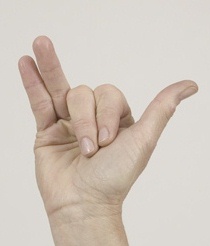Yoga Breathing
Breath is absolutely essential to life. You can go weeks without food, days without water, but only minutes without breath. In one day, you breathe in and out more than 20,000 times. Because your breathing is automatic, a function of your autonomic nervous system, you probably don’t give it much thought unless you have a breathing problem like asthma or emphysema, or you get pneumonia or bronchitis.
Yoga teaches you to be conscious of your breathing, to improve how you breathe, and to increase and strengthen your vital life-energy which is linked to your breathing.
Abdominal Breathing, or the Belly Breath Exercise
- Begin by slowing down your breathing, taking a couple of longer, slower breaths in and out.
- Next, relax your belly, and draw the next inhalation deep into your lower lungs by letting your abdominal area rise as you breathe in.
- When you exhale, pull your belly back into the body.
- Continue breathing by starting each inhalation and exhalation in your belly area.
What happens during this breathing exercise: The large dome-shaped muscle located at the base of your ribs pulls downwards. This creates a vacuum in the lungs as you breathe in. The in-coming air is pulled all the way through to the bottom of your lungs.
During the exercise, the ribs move very little. The shoulders remain relaxed and are still as well.
Alternate Nostril Breathing – Nadi Shodana (NAH-dee SHOH-dah-nah)
Alternate Nostril Breathing is a breathing exercise that calms both body and mind.
At any given time, often without being aware of it, you breathe mostly through one nostril. It is usual for one side to be more open than the other. The nostril dominance switches every 2 to 2 ½ hours and is controlled by your pituitary gland, which is considered to be the master gland of your body.
Learning the Alternate Nostril Breathing technique takes a little practice, but don’t let that stop you. The key is to remember that whichever side you exhale from is the same side you inhale on. Use the finger placement to alternately block or unblock your nostrils, switching finger placement after each inhalation.
The finger position for Alternate Nostril Breathing:
Make a loose fist with your right hand.
Extend your thumb and your fourth and fifth fingers (ring finger and pinky). Your other two fingers are curled against your palm.
This may feel awkward at first, but is the traditional hand position used for this breathing exercise.
Take a deep breath in to completely fill your lungs.
Begin the pattern of alternation as follows:
 Thumb to Right Nostril
Thumb to Right Nostril
Cover your right nostril with your right thumb.
Exhale slowly through your left nostril.
Inhale slowly through your left nostril.
 Ring Finger to Left Nostril
Ring Finger to Left Nostril
Cover your left nostril with your ring finger as you release your thumb from your right nostril.
Exhale slowly though your right nostril.
Inhale slowly through your right nostril.
 Repeat Thumb to Right Nostril
Repeat Thumb to Right Nostril
Cover your right nostril with your thumb as you release your ring finger from your left nostril.
Exhale slowly through your left nostril.
Inhale slowly through your left nostril.
Continue, alternating the closing of each nostril. Consider one breath to be an exhalation followed by an inhalation on the same side.
Practice for at least 3 minutes, but as much as 5 minutes if you are comfortable. Then, sit or lie quietly for a minute to appreciate the mental clarity and quiet created by this breathing exercise.
